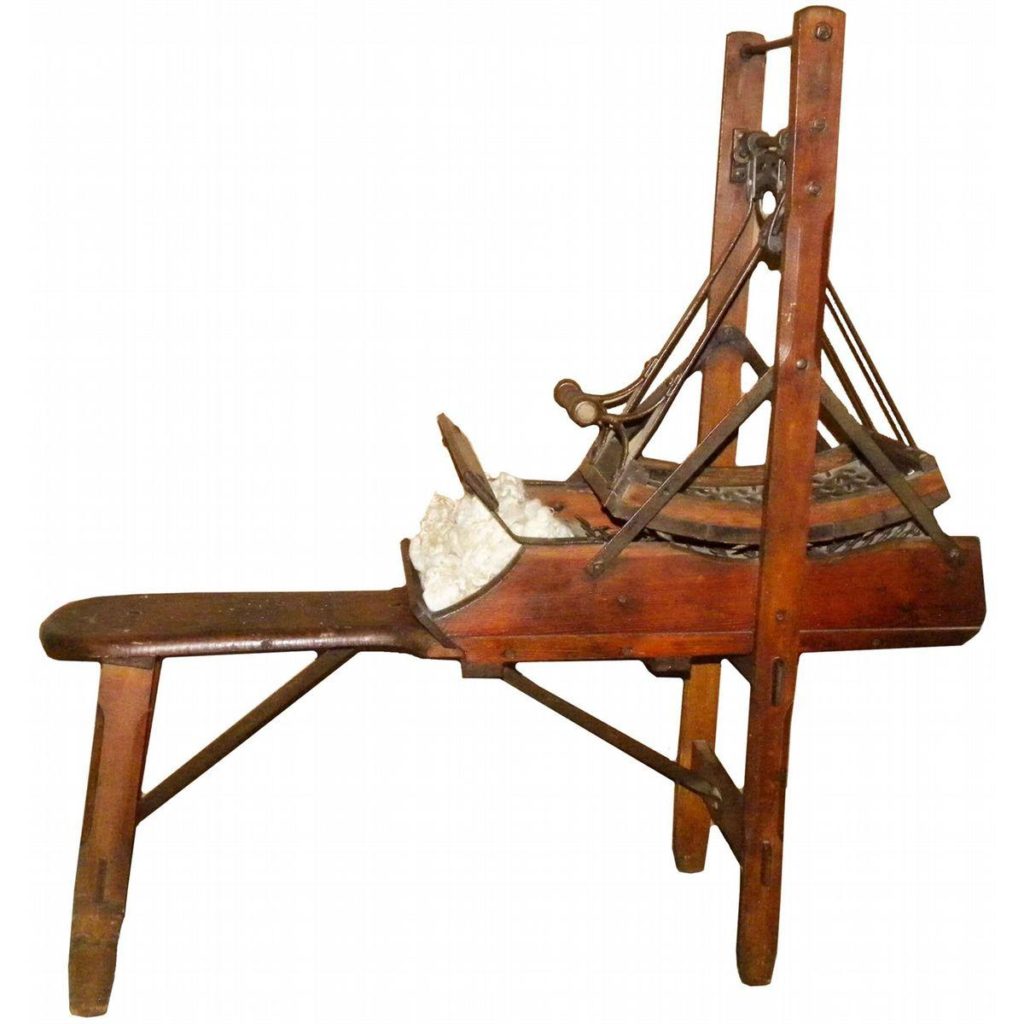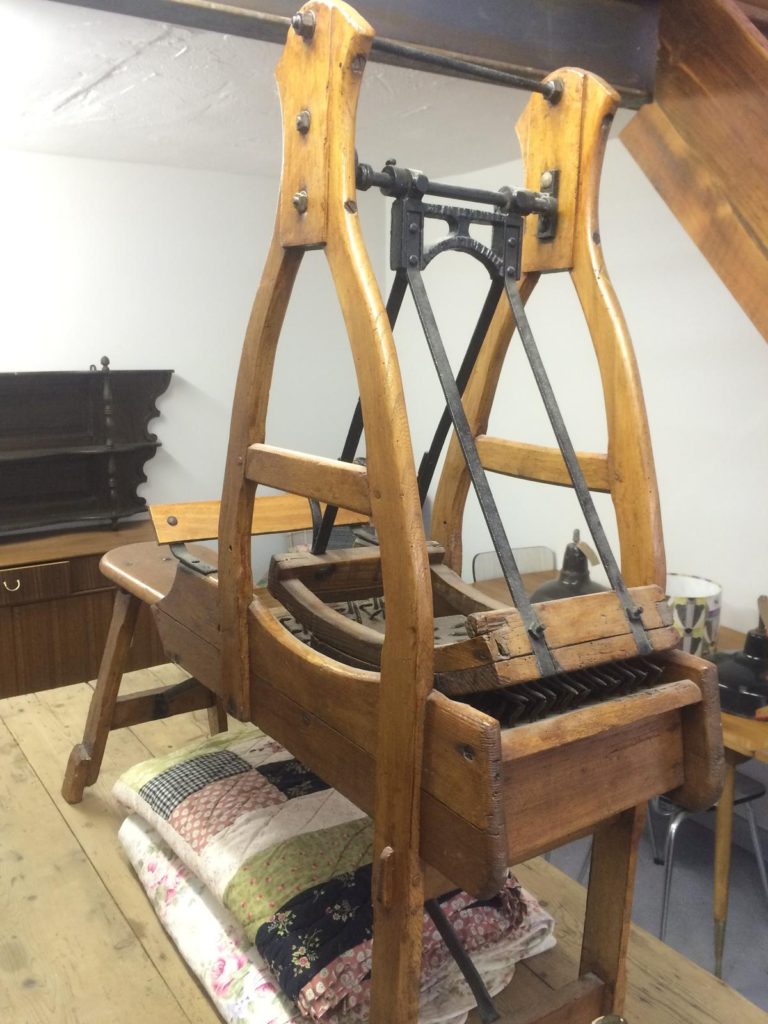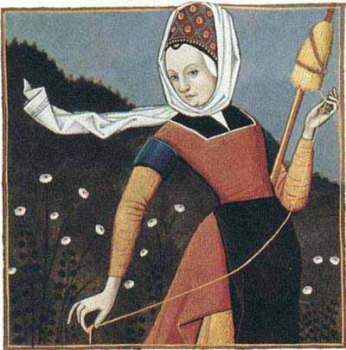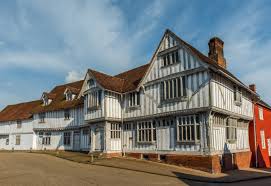This section of the web site includes a series of articles on different aspects of the history of the village of Lavenham which forms the backdrop to De Vere House and is one of the most remarkably preserved medieval, Tudor, Regency and Victorian villages in the country and once the 14th wealthiest place in the entire country.
We begin with a short article on traditional wool making:
Woolly minded (as ever)
The best wool is that sheared from young lambs as they go into their first Summer. It has soft ends so tamps, locks and weaves beautifully whilst the outer layer is still forming the impervious keratin layer and thus takes dye better. I refuse to wear anything made from pulled wool (that taken from dead lambs and sheep) and “virgin” wool is much over rated and rarely the best (merely meaning it has not already been dyed before going to the dyer).
Older wool (lambs at 6 to 8 months) is best for worsted and when we make kilts for the winter as lambs develop their weather proofing ready for the Autumn and Winter. But early summer wool is the softest, finest and easiest to work with.
Wool can also come from camel, llama, goats and rabbit but lamb remains the easiest to share as well as the most readily available.
Wool making then goes through many stages which were mechanised in America and England in the late 19th and early 20th Century but locally we still use the processes and the old wooden equipment that was used as far back as 4000 BC and the ancient Babylonians.
The fun of wool making and doing it in the traditional way is that there is no noisy machinery and plenty of chance to have a long chat with friends out in the bright sunshine. It is not arduous work but is rather laborious. The result however is worth the time taken
We begin with shearing. Sheep are sheared throughout the spring but their wool is less soft; it is best however to shear mother and her lambs together, the calmness of the mother relaxes her lambs. For this reason we shear late spring and early summer.
Many use electric shavers but these frighten the lambs which (in turn) worries the ewes. So locally we still use the sharp scissor-like shears and clippers (the sharper they are the less likely we will hurt the lambs). I make, repair and sharpen mine at my forge, they are of simple design, two blades and then a curved spring that also doubles up as the handle, welded together then riveted for additional strength.
The week before we begin shearing is spent cuddling the lambs, tickling their tummies, getting them used to our scent and contact, offering them milk from our fingers; it means when we do come to shearing they sit in our laps lapping up milk. The more still and calm we can all be: the less risk of an accidental cut.
Many communities with large herds race each other to see how many lambs and ewes they can shear in an hour, whereas we take our time (why rush?), our priority being that the lambs enjoy the experience and our company. The endorphins released if a lamb is happy adds softness to their wool; if they are frightened then the resulting adrenalin makes the ends much harder and the resulting wool has more noils and less yolk (lanolin).
Once sheared the next step is grading: the best quality of wool comes from the shoulders and sides of the sheep and is used for clothing; the lesser quality comes from the lower legs and is used to make rugs, the very lowest quality is used to make fleece and flock for wall and roof insulation. Outer layers are softer than inner layers. Wool is graded on coarseness then on length.
Scouring and fulling. After grading we scour the wool using enormous old wool combs (mine goes back to the 17th Century) and has bone teeth set in old chestnut. St Basil was flayed to death using a wool comb and so is the Patron Saint of Woolmakers which is why the Royal Throat Hospital in London has a wool comb with blood and skin all over it as its heraldic emblem. Gruesome!
Fulling involves bathing the wool whilst it is being combed in ammonia and fast running water to remove dirt, grit and any noils or knots. Ammonia for fulling used to be from human urine across the world and still is in our community (hence we have urine traps outside to capture the gold stuff).
Beating. After fulling we beat the wool on wooden slats using willow branches to break it up also called “breaking” and “willeying” in England, brisage de laines in France.
Dyed in the wool. This refers to the preliminary dying stage of wool ie where wool is not going to a dyers to be dyed. Dyed in the wool refers to those wools that are dyed before they are carded. Cloth used to be dyed with woad (that creates the famous blue wool that made Oxford and the de Vere family famous) but other colours could be used at this stage but needed a mordant to set the colour which then makes the wool harder to work with.
Next we oil the wool with linseed or olive oil to remove grease called Greasing.
Once beaten the wool can then be thread, slivered, weaseled and spun (also known as “carding”). This is done on gilling seats in a wide circle so that we can chat as we thread and card.

In the Middle Ages most wool was Wool combed hence the many houses in Suffolk named Woolcombers. But in the late 15th Century cards (boards with lots of fixed nails in them) were introduced (across which the wool is gilled or pulled across using a pendulum hence the gilling seat and the name “Gilley”). This resulted in this stage of wool making becoming known as “carding” ie drawing the wool over a board, bed or card of nails (the origin also of the word cardboard).


We slowly feed then turn (known as spinning) the wool on a distaff (a staff with a fork at the end to hook the wool hence the phrase someone has “come from the distaff end of the family” suggesting they were working class). Then the wool is thread onto a large revolving drum whilst using metal brushes on a “card” to “sliver” the wool ie to draw fine threads or slivers from the fleece.

The slivers go into a mangle, drawn by a wool jack (like that found carved above the door of De Vere House) through two rollers that remove any excess yolk and liquid, before going into a hand cranked centrifuge to be spun. The spun shivers are then fed onto our weasels which are a cross wheel (each end with a curved stretch of wood (called the capture) which helps turn the wool from long slivers into these enormous ropes of wool. A rachet counts the number of lengths of woolen sliver until there are enough for a “ball”. When the right length is reached, the weasel pops ie the rachet goes “POP” hence “pop goes the weasel”.

Spinning yarn. The weaseled shivers of wool are then fed on to a mule spinner of three sets of pairs of rollers that are hand cranked and feed onto spinners (bobbins or cones) to produce yarn. The earliest spinning wheels date back to 400 BC and where hand cranked (ours is much later being 18th Century, we can take it in turns to sit at it and it is foot powered which means our hands are free to do other things.

Weaving. Woolen yarns are made into fabric using a plain weave (rarely a twill) called an interlock, which produces a fabric of looser weave and a soft surface (due to napping) but with little or no luster or sheen. Napping often conceals flaws when we come to knit.
Worsted yarns can create fine fabrics with exquisite patterns using a twill weave. The result is a more tightly woven, smooth fabric. Better constructed, worsteds are more durable than woolen yarns and therefore more costly.
Essentially napping denotes depth where if a wool is loosely woven then depth (additional layers of weave) are added to maintain a fabrics strength and integrity. Alternatively tightly woven wool (worsted) has a twill weave that is much tighter and so does not need as much depth (nap) to achieve the same strength of fabric.
Finishing. This begins with fulling with clear running water (we use the local stream). This is not to clean the wool but rather it binds the weave together as the wool fibres shrink slightly. The interlocks are pulled tight: basically the wet wool is swung round our heads in a figure of 8 movement (called crabbing).
Decating follows and this involves stretching the wool, crabbing when drying slowly over angled stone shelves that are south facing (so get lots of sun) until we have shrunk proof the wool (not done for many yarns produced industrially but wool or worsted is both crabbed and decated by hand it lasts far longer. Decating at this stage also prevents wool shrinking when washed but it needs hot sun.
Dying. Finally, if we have to use a mordant to set the wool then we dye the wool at this stage using natural dyes from black and blueberry, plum, avocado to cumin and turmeric to give vibrant colours that are fixed through a final fulling, crabbing, decating and brushing to remove any crystals from the dying process
The end result is that by the end of next week I will be knee deep in balls of yarn and thread of vibrant colours ready for St Michael’s Mass from when I begin the knitting and tapestry weaving season: great scarves, jumpers, cardigans, socks, woolen underwear and brocade dresses, or tapestries of historical events and local landscapes, a couple each year. They usually end up being given away as Christmas presents.
Tapestries need the finest wool and a wide range of colours (worsted preferably) and are woven by interlocking and alternating horizontal and vertical threads through a loom (a backing often make of hemp or hessian). Once you have a section done you pull the whole structure tight (tamping) to hide the vertical weave so that the pattern is left visible as the horizontal weave. The art of tapestry making is to have the picture you seek to achieve held in your mind as a pixelated image.

The net result of all of this is that not only are farms littered with odd contraptions from weasels and mangles to cider, printing and linen presses, mainly hand cranked or wind and water powered (the thresher I use for example is wind mill powered, my grinding stone powered by my water wheel) but also surnames and the names of places found across East Anglia reflect the dominance of the wool trade. I still shear, comb, full, dye and weave wool and tapestries in the traditional way but I could mechanise … I hear that shearing for example can now be done by robots!
But the joy of working with the lambs and with others and the knowledge that we control the whole cycle of production cannot be replaced by some distant computer. We determine the standard of what we wear and so wear far finer, more colourful, softer and higher quality wool than ever we could afford if we bought it.
[A few surnames associated with wool making: Gilling, Woolcomber, Fuller, Dyer, Bobbin, Weasel, Knapp, Distaff, Yarn, Worsted, Crabbe, Decate, Willey, Carding, Knole, Cardstairs, Shepherd and Shearer]
The wool trade more than any other industry shaped medieval Europe and resulted in huge wealth especially for Flemish and English merchants. A massive strike by English wool workers in 1525 centred around Lavenham would bring the monopoly England held over the wool trade to an abrupt end coupled with our loss of control of the Channel after the defeat of the English Armada in 1589 that left the Dutch holding sea power in the Channel right through until 1688.
In 1598 the Treaty with the Ottoman Empire was signed that suddenly gave England access to the silk markets of China and Iran and this was the next blow to the English wool trade.
Trade in silk, lace and linen gradually edged wool out throughout the 17th Century. The heyday when wool merchants were the oil barons of their time was gone.
The de Vere family were both the Guildmasters of the Woolmakers Guild of England (1420-1525) and the Lord High Admiral (1330-1570) responsible for customs and for England’s merchant fleet at the height of the wool trade; our home village of Lavenham was the 14th richest place in England, the de Vere family became the 13th richest in Europe, all from wool making. Oxford Blue is named after the de Vere family and Lavenham has its own dye known as Lavenham Blue.
If you are interested in the history of wool making, weaving, dying and tapestry making then an excellent exhibition can be found in the museum in Lavenham GuildHall

